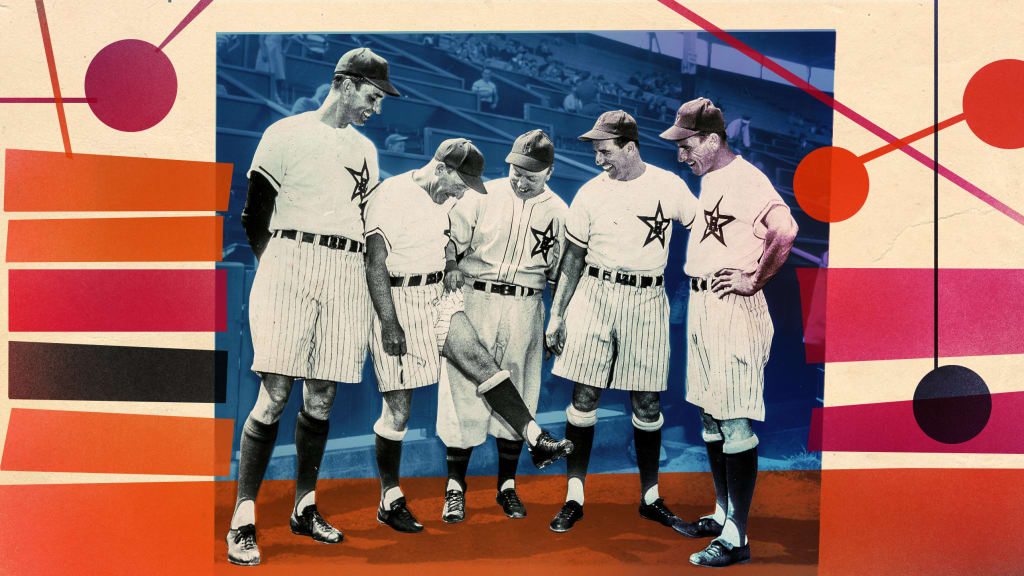
It was just another one of Bill Veeck's wacky ideas. The legendary team owner, famous for his outrageous stunts, made news when his Chicago White Sox took the field in shorts on Aug. 8, 1976. But -- this time, at least -- Veeck wasn't an innovator. He had been beaten to the punch 26 years before by the Hollywood Stars in the Pacific Coast League.
While teams today will throw on Spongebob Squarepants-themed uniforms or togs designed to be "the worst uniform" to entice fans and generate buzz, that wasn't the reason for the short pants -- at first, at least.
"The Hollywood Stars started [wearing shorts] on April Fool's Day in 1950," Dennis Snelling, author and Pacific Coast League historian, said in a recent phone call. "Fred Haney, the manager of Hollywood, had read an article by an L.A. sports columnist named Braven Dyer and got the idea from there about how soccer players wore shorts, and he thought it'd be a great idea. So, he put them in shorts."
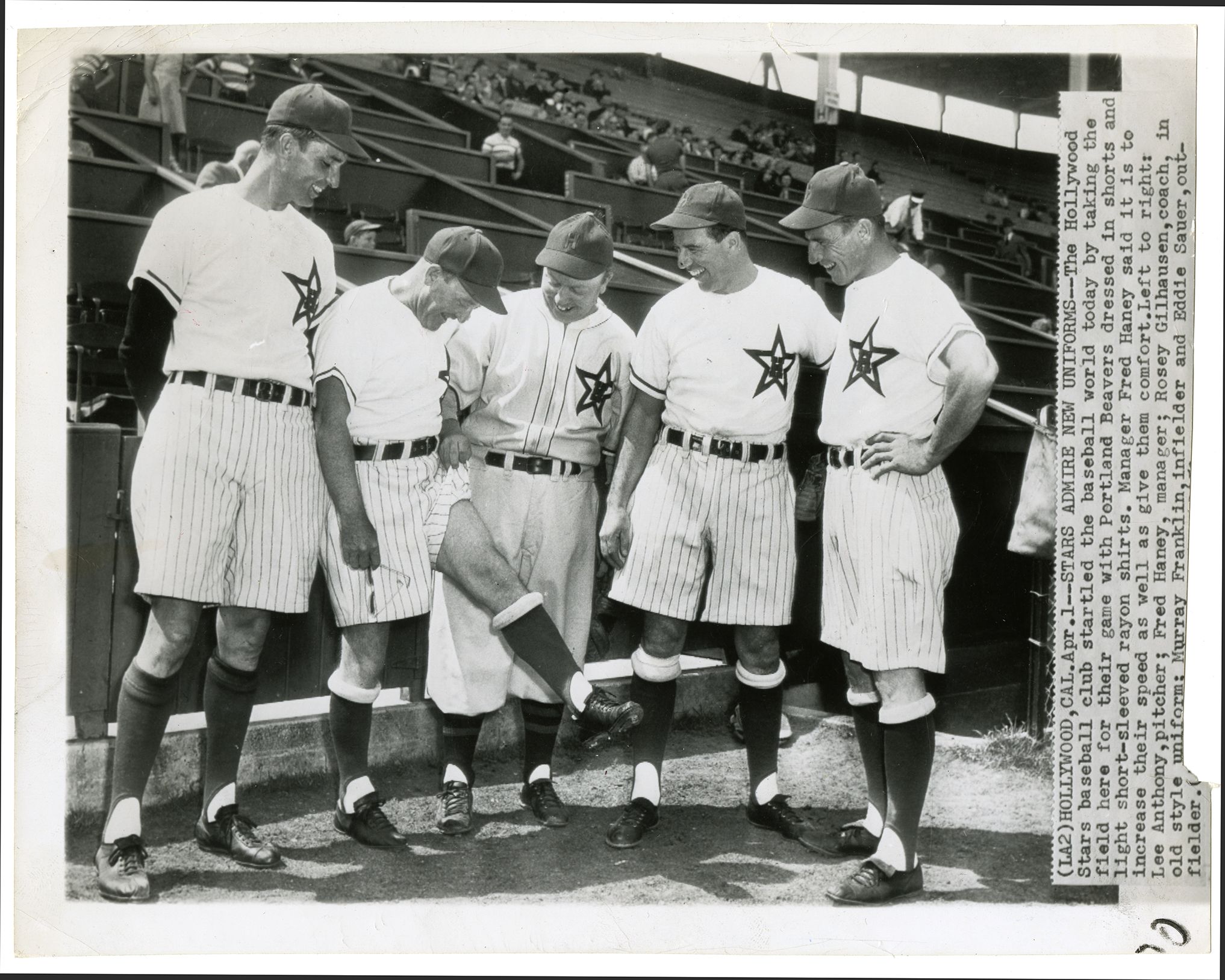
"I am firmly convinced the shorts will add both to the comfort and efficiency of my club," manager Fred Haney said. "I have given this matter careful thought. Shorts also ought to increase the players' speed around the bases."
Though the idea was sound -- the uniforms were made of heavy wool flannel at the time and by the end of a double-header could be filled with sweat -- the newspapers acted as if the wearing of shorts was akin to a criminal fashion faux pas.
"Players on the Hollywood baseball team skittishly took the field today looking like a bunch of gents who absent-mindedly forgot to put their pants on," the Los Angeles Daily News reported.
The players' wives piled on, too. The paper's front page featured pitcher Chet Kehn's wife stifling a smile while looking at the shorts. She gave a one-word answer when asked for her reaction: "Gulp."
The shorts weren't the only change, as the Stars also opted for something more closely resembling a T-shirt than the usual button-front uniforms.
"It was like a Henley pull-over and had a couple of little stamps," Jerry Cohen, the CEO of the always fashionable Ebbets Field Flannels, said. The jerseys were likely made of the Rayon material that the company uses for their early football jerseys. "The shorts were wool flannel, but the tops were not, so they predated the switch to the double-knits in 1970-71."
They worked well enough in the first game. With the weather a balmy 78 degrees, the Stars and their breezy knees won, 5-3, with the Pasadena Independent headline proclaiming that the "Hollywood stylists beat Portland."
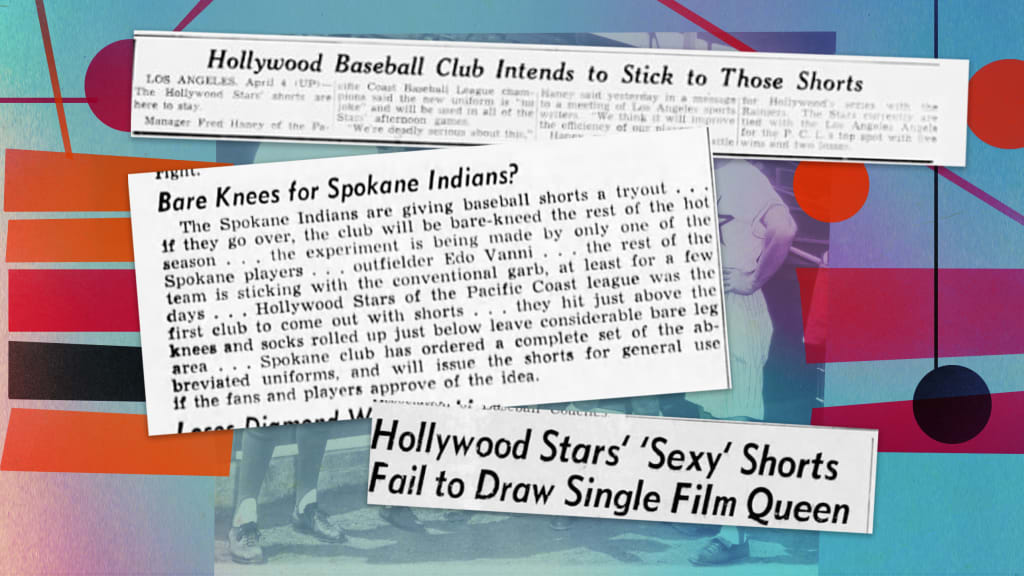
Though the papers treated them like a joke, they got attention. And in a world where all press is good press, this was a boon. Sure enough, more teams started jumping into the fray.
The Spokane Indians hopped on board the shorts wave, putting them on for select home games in 1951. Outfielder Edo Vanni was given the task of testing out the shorts before the team committed to wearing them as part of their uniform set.
"I don’t know how often they wore them, but there was a photo in one of the local papers, and they did wear them on several occasions," team historian Jim Price wrote in an email. "It was the perfect year for such a stunt. The Indians, who won the Western International League, had fun-loving outfielders Edo Vanni and Eddie Murphy, both league legends, on their roster. The Indians, heavily staffed with good-hitting minor-league veterans, outlasted Vancouver to win the pennant by a half a game.”
Vanni and Murphy were known practical jokers. In 1948, the team bus broke down on a return trip from a series against Salem. Many of the players went back to sleep on a nearby haystack, so Vanni did what any player would do: He set the haystack on fire. Clearly, Vanni was the right choice to test out these highly technical new togs.
After wearing them for an inning during a game in June, he gave the go ahead to the team to order more. With a full set ordered, they most likely put them on for the first time in an exhibition game against the House of David -- the team associated with the religious community famous for their long beards. And where was Vanni? Behind home plate, of course, acting as umpire.
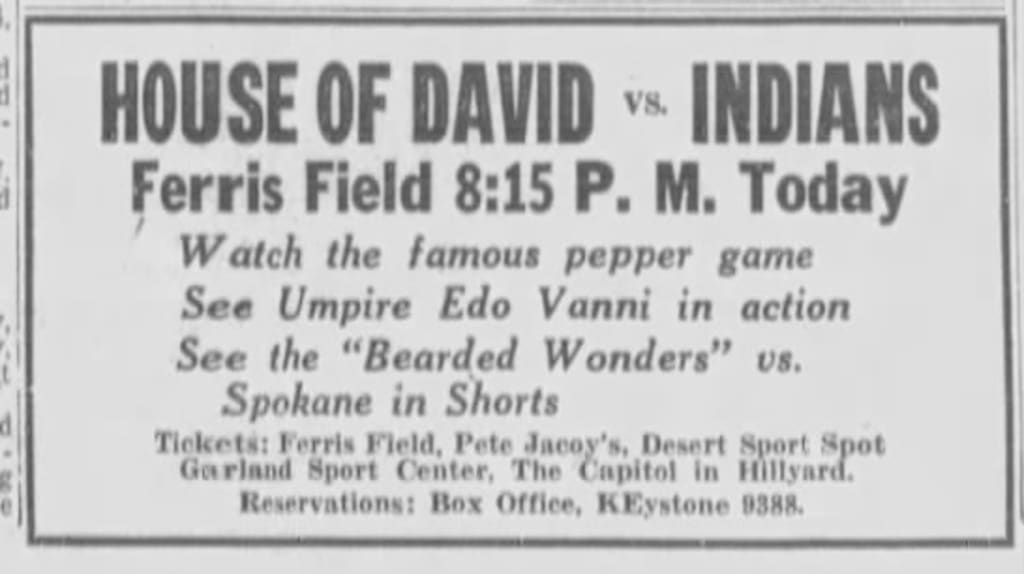
The shorts spread far and wide. The Houston Buffaloes, Mobile Bears and Miami Beach Flamingos had them. When the Miami Sun Sox donned the unis, the press couldn't believe that the legendary, irascible Pepper Martin was going to show off his own hairy legs. The Miami Daily News ran a cartoon, with the artist making sure to draw plenty of attention to his spindly pins.
"Knobby and unglamorous though they be, Pepper Martin's scrawny knees will come out for a public airing on the night of June 10, [1950] in Miami Stadium, the Miami Sun Sox front office gingerly announced," John McMullen wrote, later noting that the vision of Martin in shorts was "somehow disturbing."
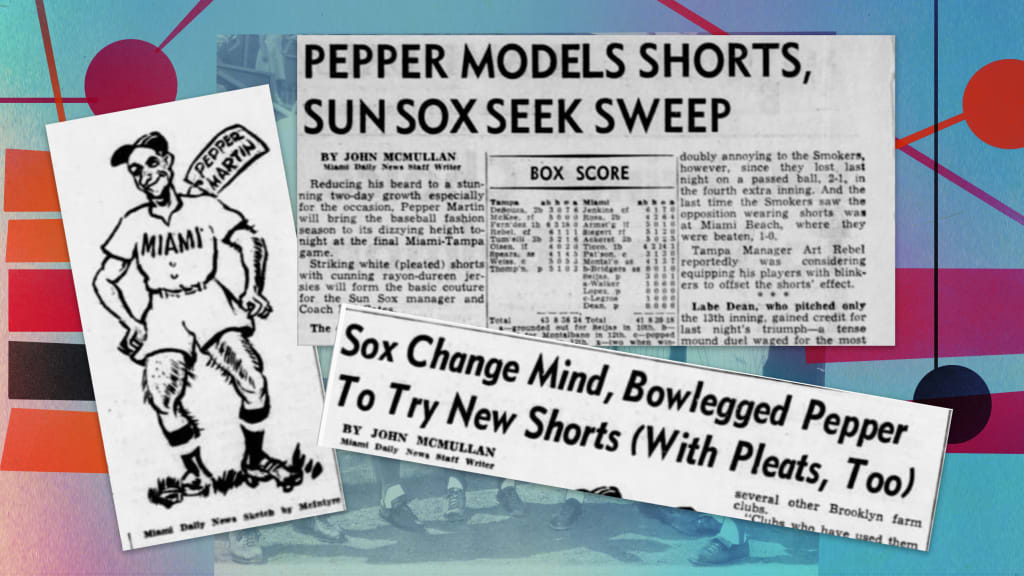
Some teams, like Newport News Dodgers or the Bisbee-Douglas Copper Kings, picked them up just for a series or two, looking to entice fans to come out to the ballpark and see a (very) little skin. Opposing teams might even pull up their pants for an inning to mock their hemmed opposition.
"Fort Worth was going to have them and they had ordered these green shorts with red stripes," Snelling said. "Bobby Bragan was managing Fort Worth, and the story is that he threw a fit and so they were never ordered. They said, 'Oh, we couldn't get the dye right.' But it was just one of those things."
Now, if you are a Minor League buff, you may have noticed that many of these teams were Dodgers farm clubs. This is not a coincidence.
"Branch Rickey happened to be responsible for many innovations and experiments. He was always tinkering," Cohen said. "For example, he came up with the first batting helmet, which looked like just a puffed up baseball cap. ... Given the the teams and their affiliates, I think this was an innovation that they were testing in the Minor Leagues."
One newspaper called it, "The promising fashion house of Branch d'Rickey." Rickey himself said, "It's such a good idea, I wish I came up with it."
Unfortunately, the trend was short-lived. Despite more and more clubs adding them to their collections, the barbs never stopped. Sliding was painful, too -- even with players wearing hip pads under their clothes.
"[The Hollywood Stars'] Chuck Stevens liked them .... He was a first baseman, but I think he was unusual," Snelling said. "The pitchers were OK with it, especially on a hot day. I think the base runners just tore them up too much. It wasn't very practical. And the fans would just make fun."
It didn't help that the novelty wore off, too, at a time when the Minor Leagues were looking to boost attendance.
"If you look at 1950, the Minor Leagues were starting to struggle a little bit. They had really boom time in '46-47," Snelling said. "And then TV and people being more mobile, they had more entertainment options. So, the Minor Leagues were looking for things that would draw fans and other ideas that maybe would draw women fans."
After wearing the shorts 22 times in 1950, the Stars wore them just three times in '52. The fad faded away and long pants reigned supreme once again.
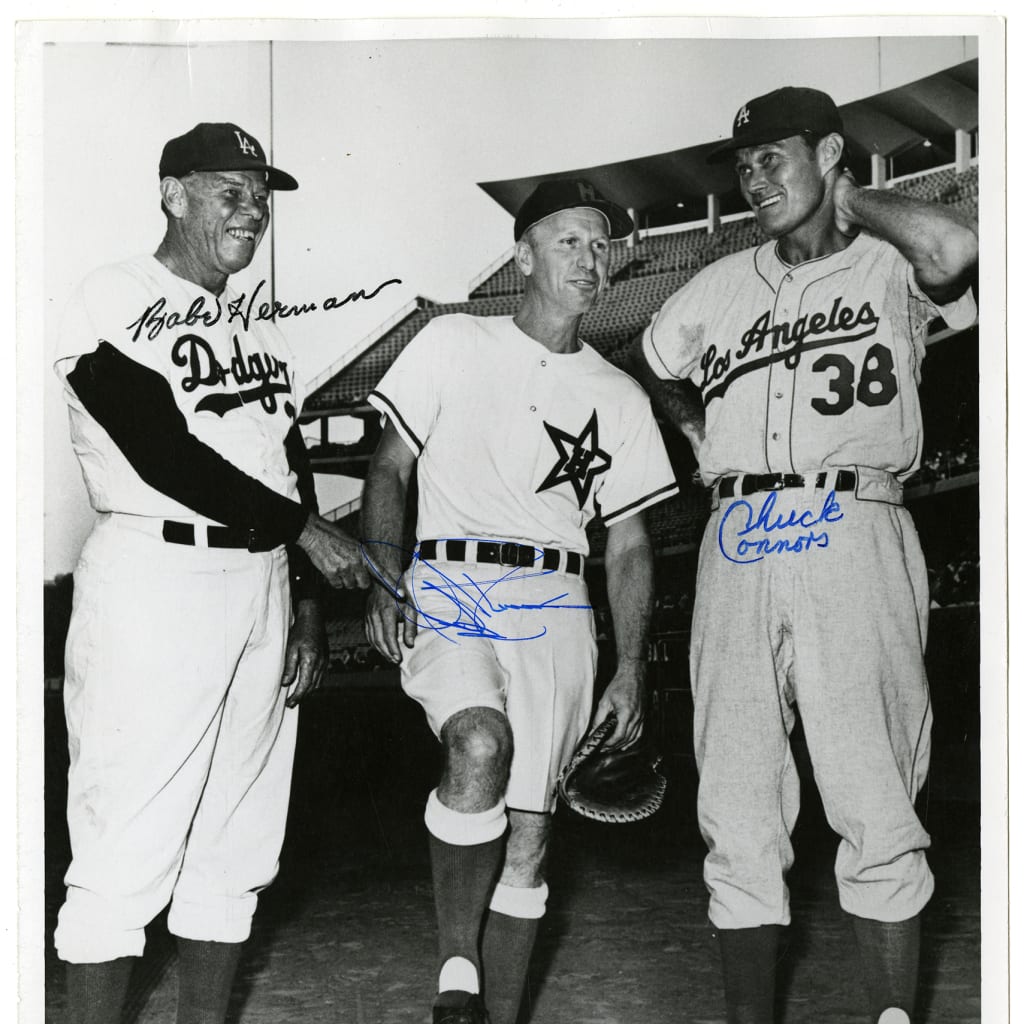
"Shorts is the trend," Fresco Thomson, the director of the Dodgers' farm system, said in 1950, "and it's only natural they'll be worn in the Majors some day."
In a way, Veeck and his White Sox proved him right. It just took 26 years. Still, that's a more accurate prediction than Nostradamus ever pulled off.
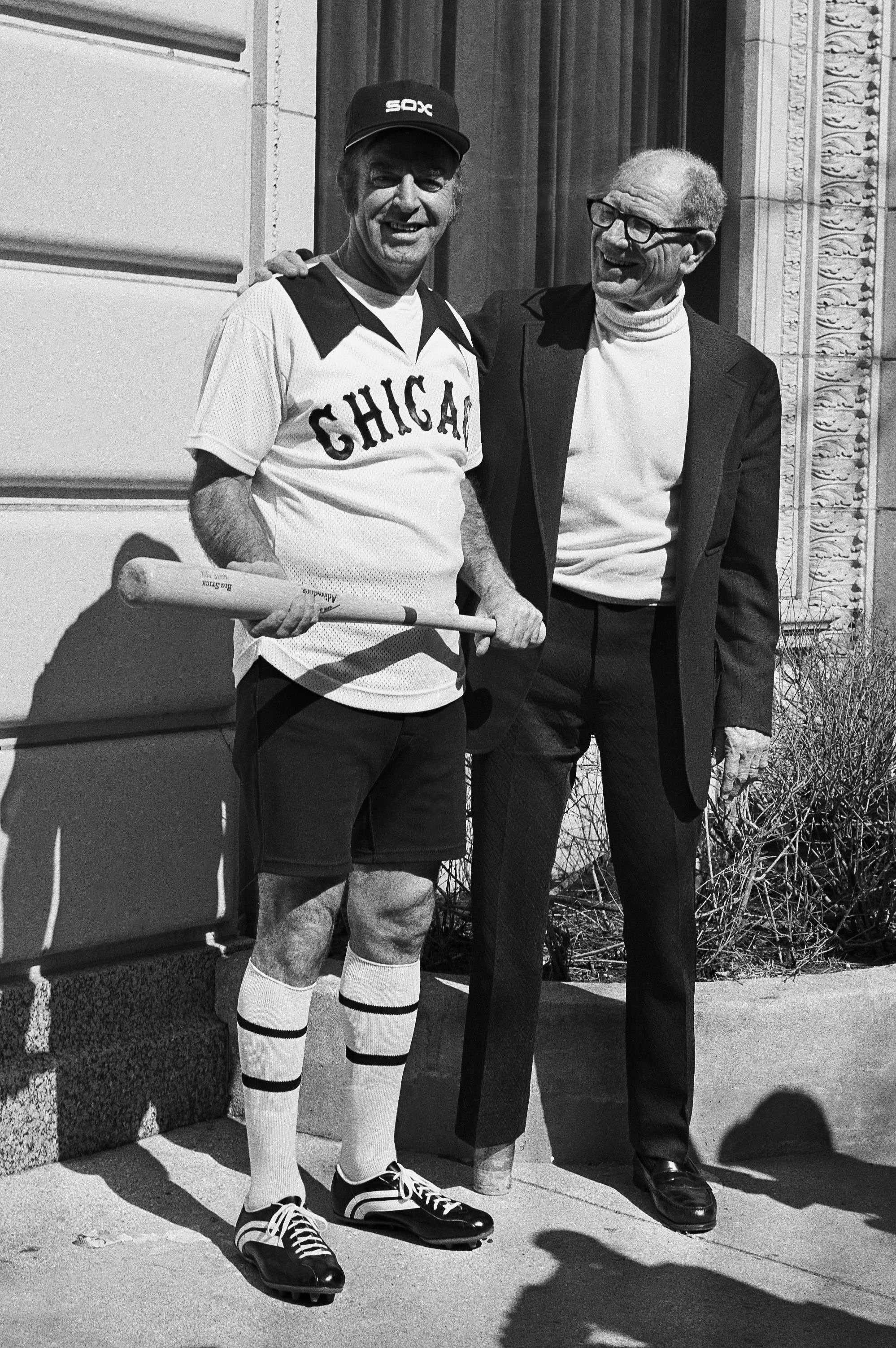
Special thanks to Frances Kaplan at the California Historical Society for research assistance.
